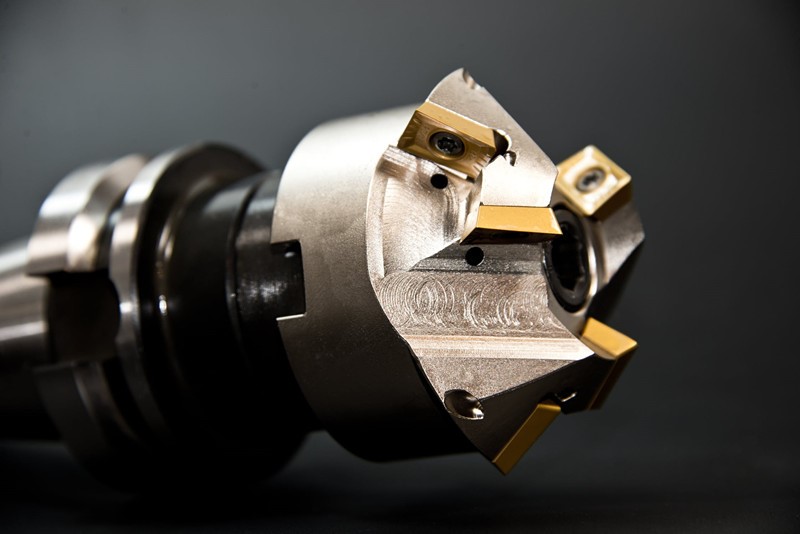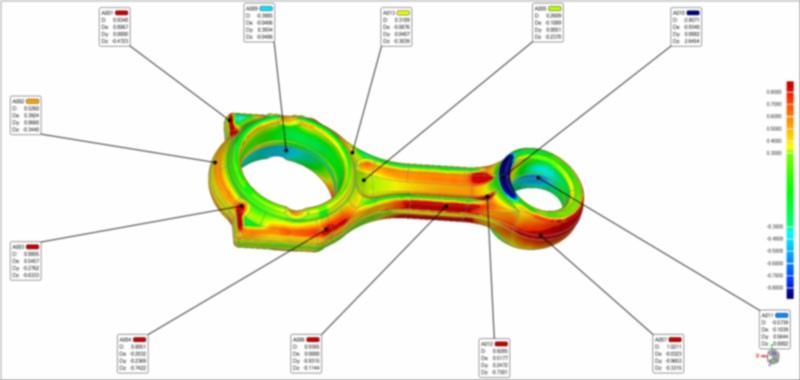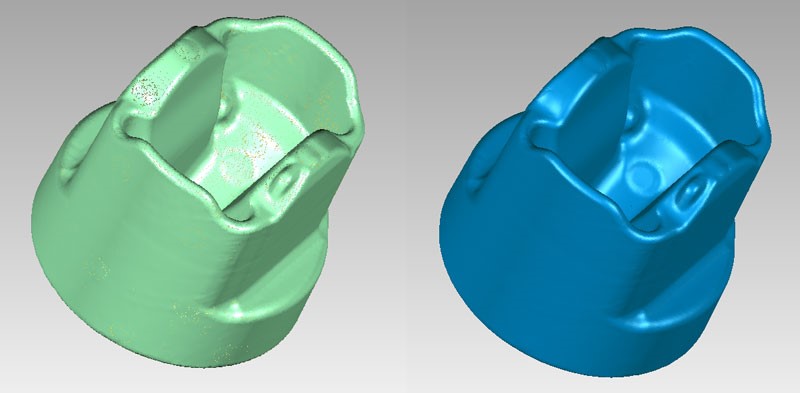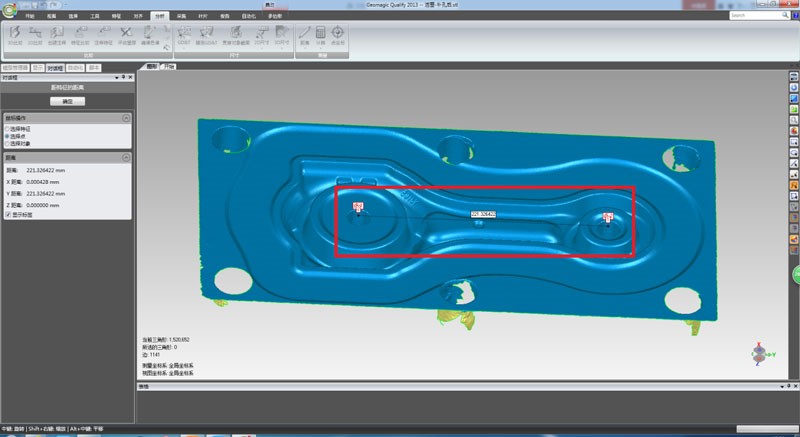Precision casting is an advanced technology in machinery manufacturing. And the deviation comparison between casting and mold is very critical.
What does customer need?
Although manufacturing is based on drawings, there are still many deviations, besides, castings are complicated and irregular in shape. Hence, customer needs an effective inspection method delivering high-precision and time-saving, so that the comparison results can completely reflect the deviations and specified geometric tolerancing.
Traditional inspection method, however, is hard to precisely get deviations for complex castings and mold. Therefore, 3D inspection with high accuracy helps a lot in machinery manufacturing.
ScanTech solution
ScanTech handheld 3D scanner HSCAN331 can easily handle this, combining with professional inspection software to make data analysis.
1. Scanning procedures
● Attaching stick mark points
● Inspecting casting and mold with HSCAN331
● 3D inspection analysis
● Optimize casting’s shape
2. Casting rod
● Attaching stick mark points: 3 minutes
● Scanning: 5 minutes (resolution is 0.6mm)
Casting rod point cloud data
Casting rod stl 3D data
Contrast detection of casting rod and data mold
3. Casting piston
● Attaching markers: 2 minutes
● Scanning: 4 minutes (resolution is 0.6mm)
Point cloud and 3D stl data
Contrast detection of piston and data mold
4. Concave mold
● Attaching markers: 3 minutes
● Scanning: 5 minutes (resolution is 0.6mm)
Point cloud and 3D stl data
Contrast detection between piston and dada mold
5. Geometric tolerancing measurement
Standard (data mold) geometric tolerancing data
Geometric tolerancing data by using HSCAN331
3D inspection for irregular castings solved customers’ requirements in deviations and shape modification. ScanTech handheld 3D laser scanner HSCAN greatly enhances work efficiency and offers excellent solutions for machinery manufacturing.




















